Loader-led innovation: Stope Soaker 2000 tackles underground dust with a $40 DIY sprinkler, proving cheap can also be smart underground
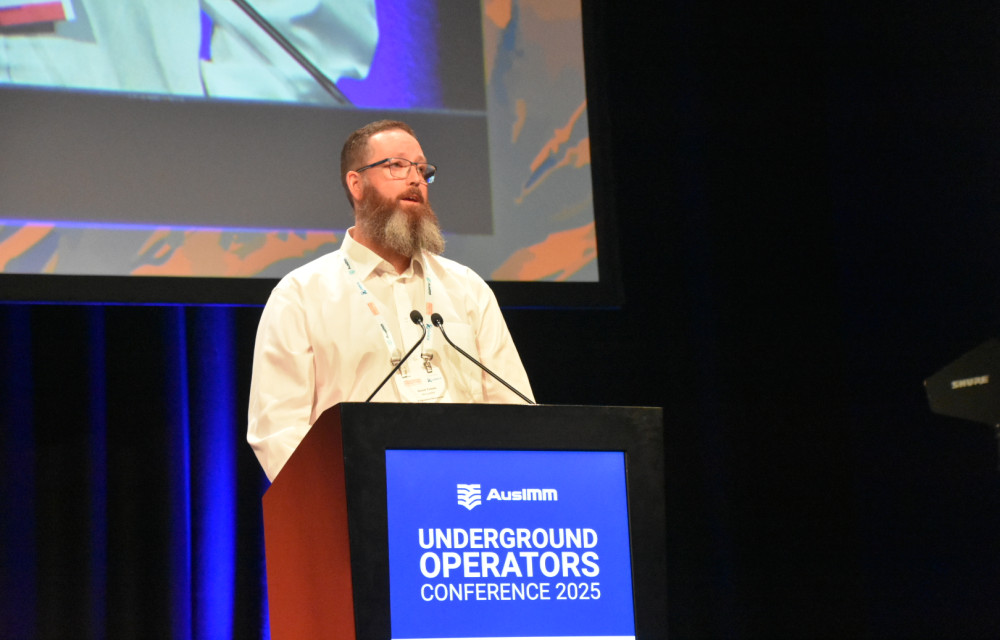

, , , , , , , , , , , , , , , , , , ,
, ,
,
In an era of advanced underground automation and high-tech dust suppression systems, one of the most effective solutions for a pervasive mining problem—stope dust—has emerged not from a manufacturer, but from a loader operator’s workshop. Dubbed the Stope Soaker 2000, this grassroots innovation is proving that sometimes the smartest ideas are also the simplest.
At the 2025 AusIMM Underground Operators Conference in Adelaide, David Tomek—then Underground Mine Supervisor at Metals Acquisition Corporation’s CSA Mine in Cobar, NSW—presented his tongue-in-cheek but technically compelling solution to a hazard that remains all too common in underground mining: airborne dust from bogging dry stope material.
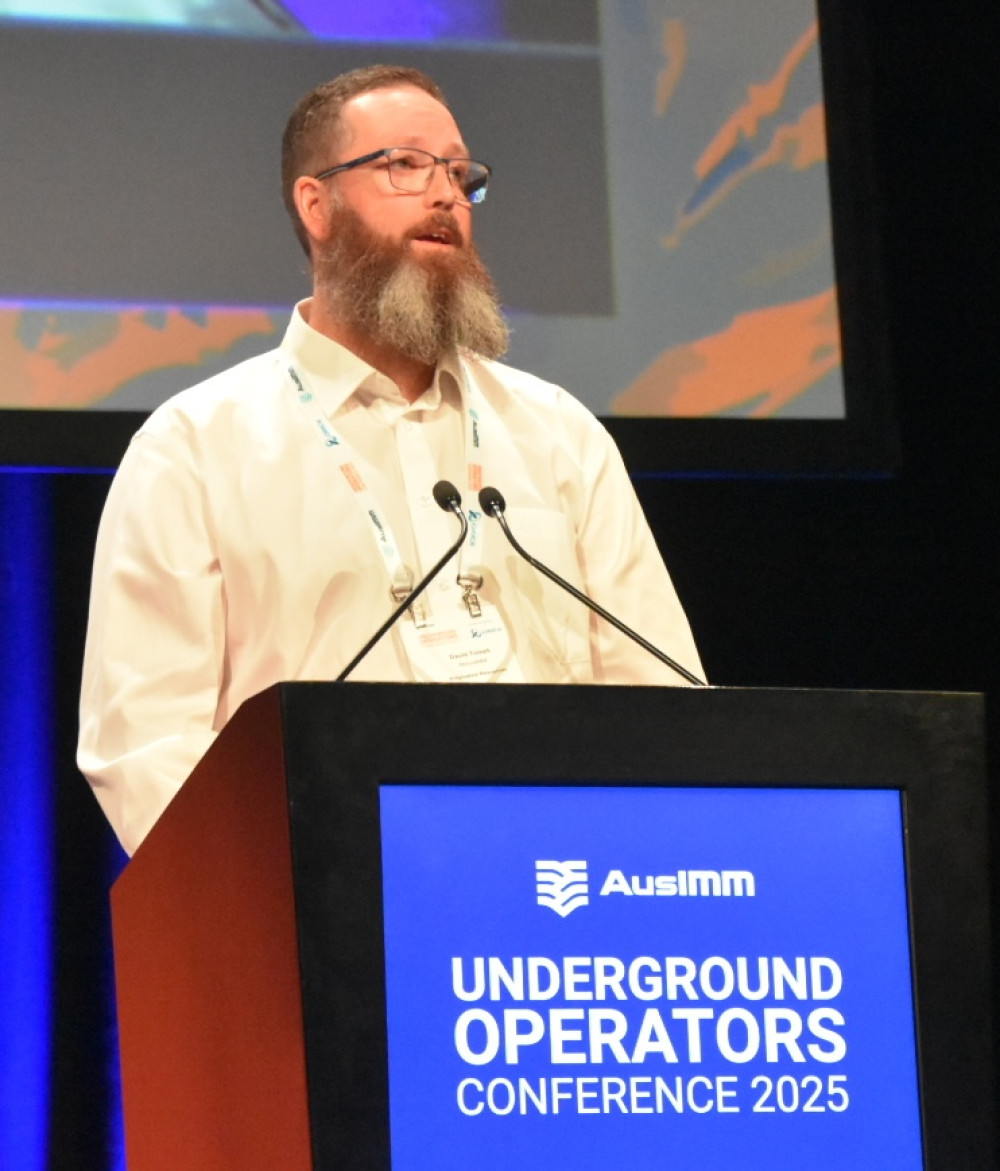
“Throughout my career, I’ve spent a lot of time as a loader operator,” David told delegates. “And with that comes a lot of frustration—cameras dust out, lasers stop working, electrics get soaked, roads get washed away. It slows productivity, and more importantly, it affects safety.”
The presentation hit home with many in the room, not least because the industry has long accepted dust as an unavoidable by-product of stope production—particularly in blind uphole stopes where traditional dust suppression systems fall short.
The Problem with Existing Systems
From fixed cannons and dust curtains to 1-inch hoses and spray lines, underground mines have tried a suite of watering systems. But as David outlined, most come with critical limitations. Many are cumbersome to install, difficult to reposition, and reliant on high water pressure that CSA’s legacy network couldn’t consistently deliver.
“Fixed cannons can get great throw distance, but they’re heavy, drain the system and need machines to move. Spray bars wet the dirt, but they also soak your cameras and electrics. And hoses—well, they only water one spot,” David said. “We needed something that could hit the full strike length, be moved easily, work at low pressure, and be cheap enough to replace if damaged.”
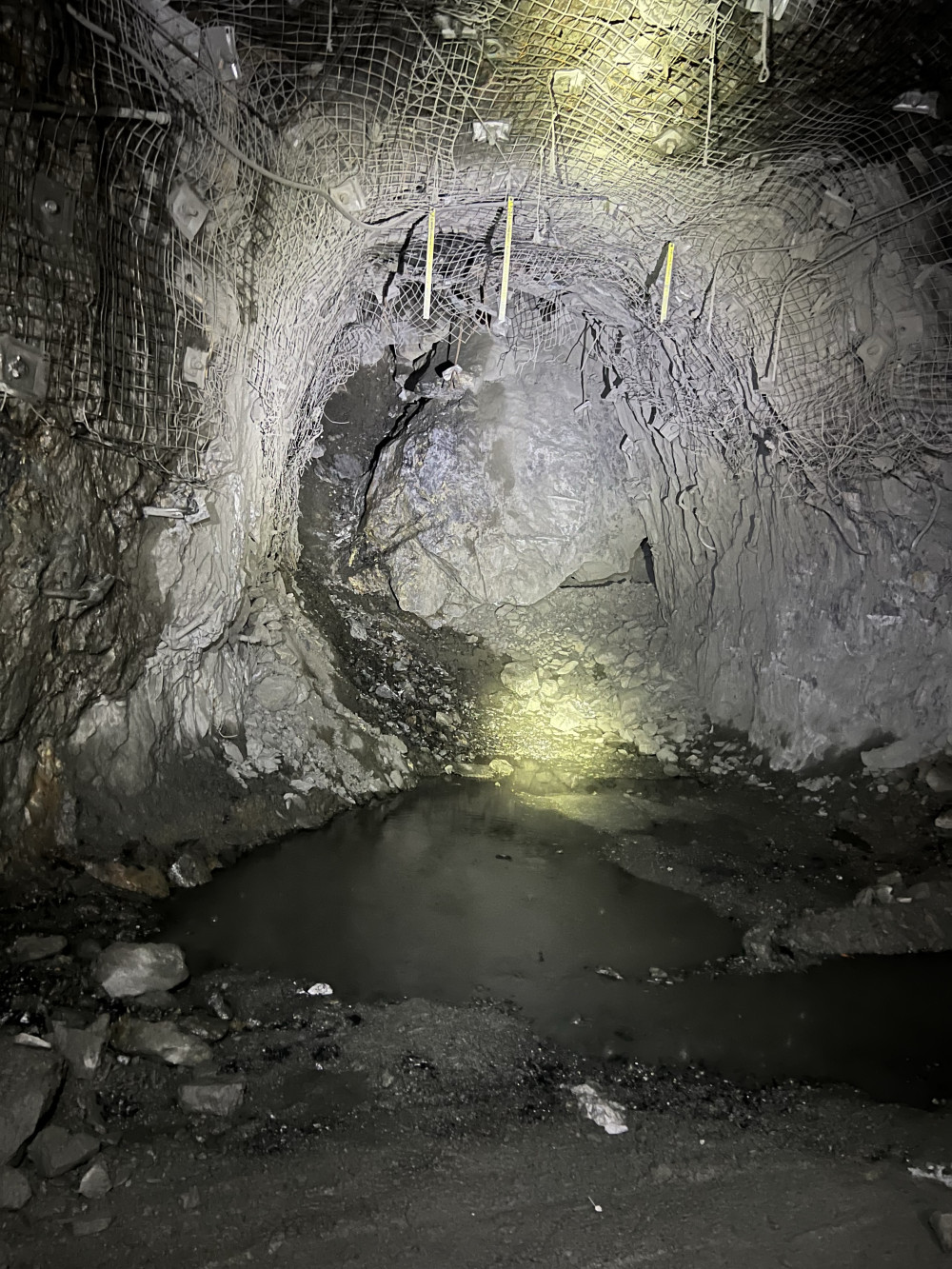
Facebook Post Sparks Functional Breakthrough
It was a late-night scroll through Facebook that sparked the idea. David noticed a post from one of his own loader operators asking what other sites were using for stope watering. “I read through the comments and realised there was nothing new—just the same old stuff,” he said. “So I decided to build something myself.”
Enter the Stope Soaker 2000—a garden sprinkler head mounted to a paint pole, fitted with a one-inch Minsup connection and rigged using rocks and rope. “I shelled out 40 bucks and tested it in a dry drive,” he laughed. “We got 18 metres of throw, and it watered the whole drive, wall to wall.”
Initial deployment in an active stope revealed some limitations—mainly oscillation from pressure and lack of directional stability. But with each iteration, improvements were made. Stainless-steel versions were fabricated by the site boilermaker, frame lengths adjusted for stability, and a solenoid timer was added to enable programmable watering cycles after blasts.
The result? A semi-automated, easily relocatable, and highly effective system for saturating stope material and suppressing dust before bogging begins.
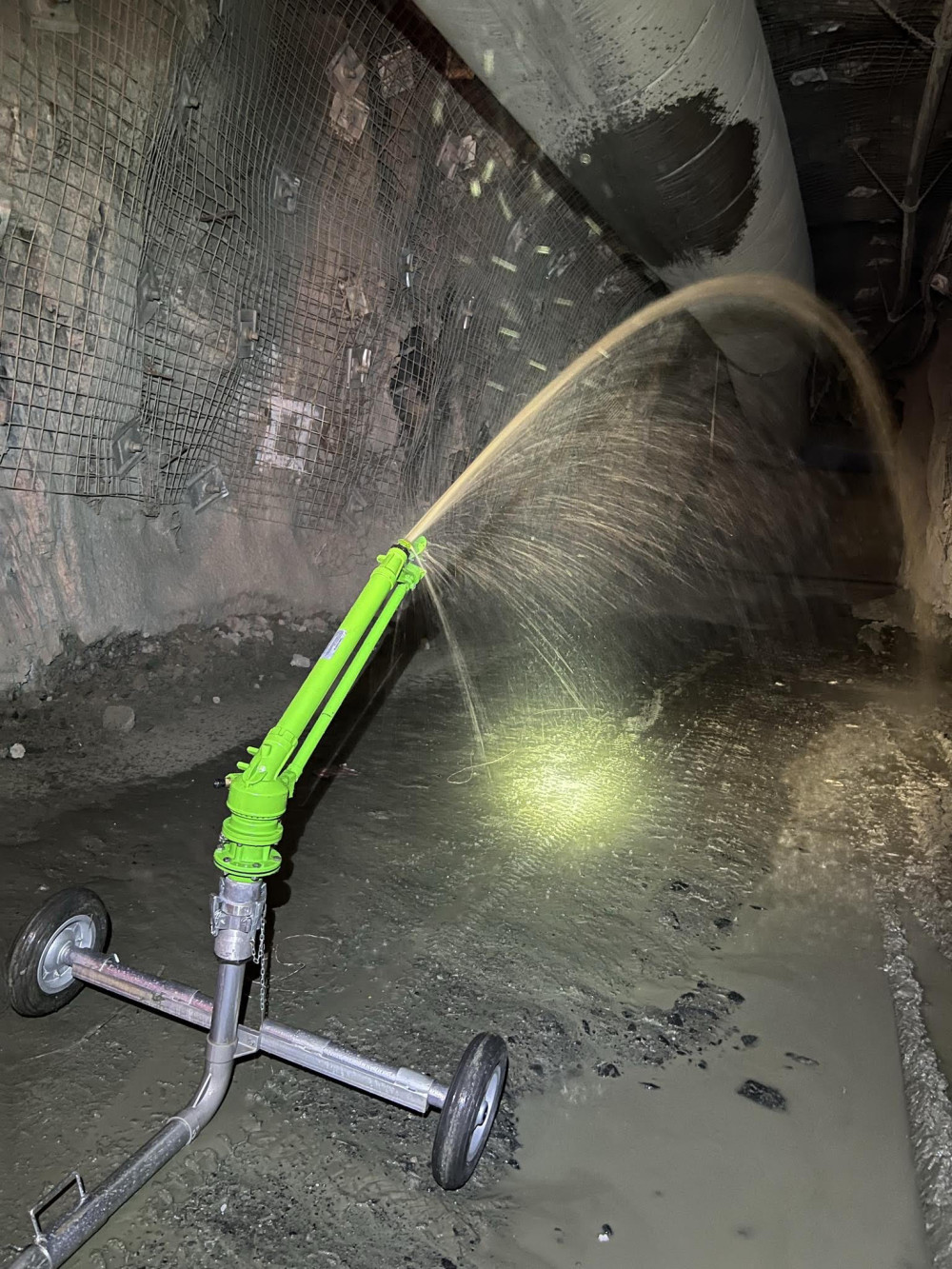
An agricultural sprinkler trialled for stope dust control—ultimately found impractical due to its fixed arch angle and high water supply demands.
Automation Adds Value
One of the breakthrough enhancements was the integration of a Bluetooth-enabled Hunter Node solenoid, controlled via an iPad. “We programmed it to run 20 minutes every two hours,” David said. “It kept the dirt wet without washing away the roads.” It also reduced the exposure of workers to hazardous zones by eliminating the need to manually adjust or start the system post-blast.
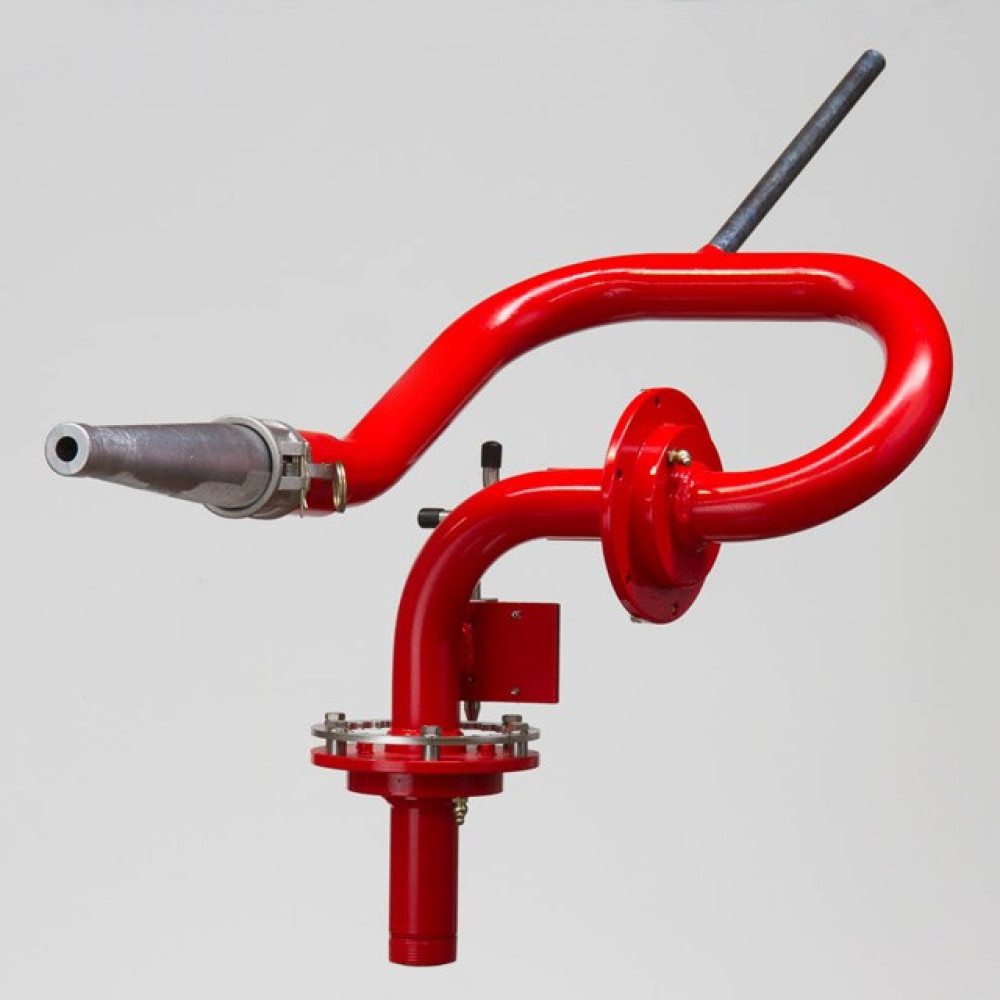
Destruction by Design
Not every deployment was a success—especially the trial of a post-blast pre-installed system intended to run during re-entry. “We set it up before firing, behind the bund, but the light-weight frame didn’t handle the force. The sprinkler survived, but the elbow snapped,” David admitted. “But it worked. It came on when it was meant to, and the bund was soaked. That’s a win in my book.”
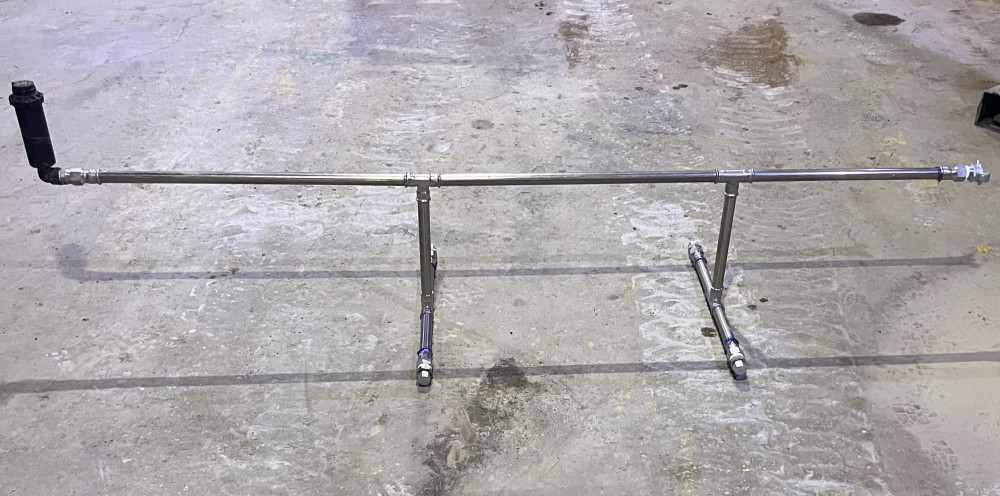
A newly fabricated Version 2 of the Stope Soaker, showcasing a more robust and stable design ready for underground deployment.
Workforce Ownership and Feedback
David emphasized the role of site culture and leadership in enabling the innovation. Under new ownership, CSA encouraged frontline operators to propose and trial ideas—cutting through the bureaucracy that often stifles site-level improvement.
“Loader operators were quick to take ownership of the Soaker,” said David.
“They moved it, adjusted it, gave feedback, and actually wanted to make it better. That kind of buy-in is rare.”
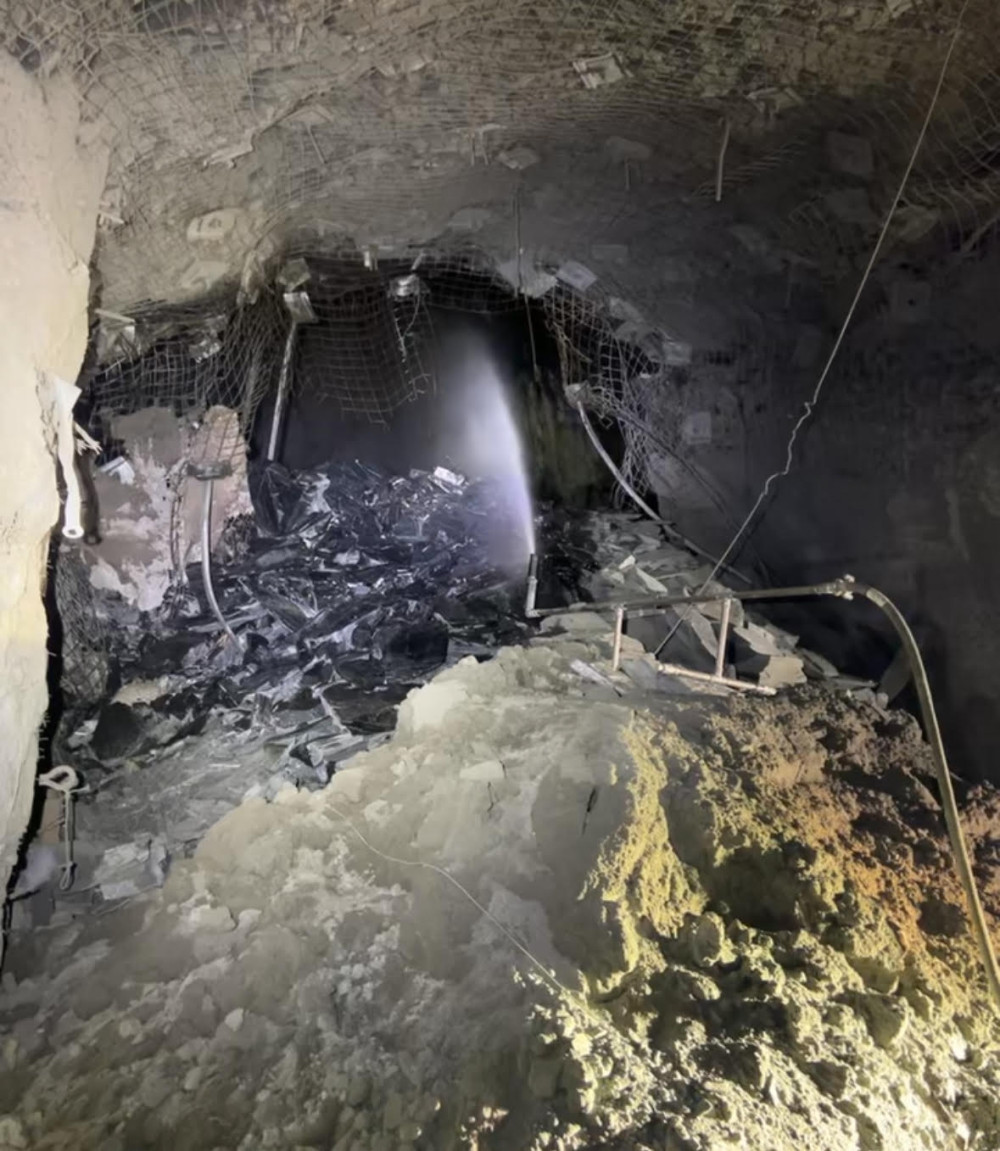
Durability vs Cost: The Trade-off That Works
When asked whether the sprinkler could handle salt buildup or clogging, David was pragmatic: “If it lasts a month, throw it away and start again—it’s still cheaper than anything else on the market.”
The system’s basic design makes it easily replaceable, even with wear from salinity or impact damage.
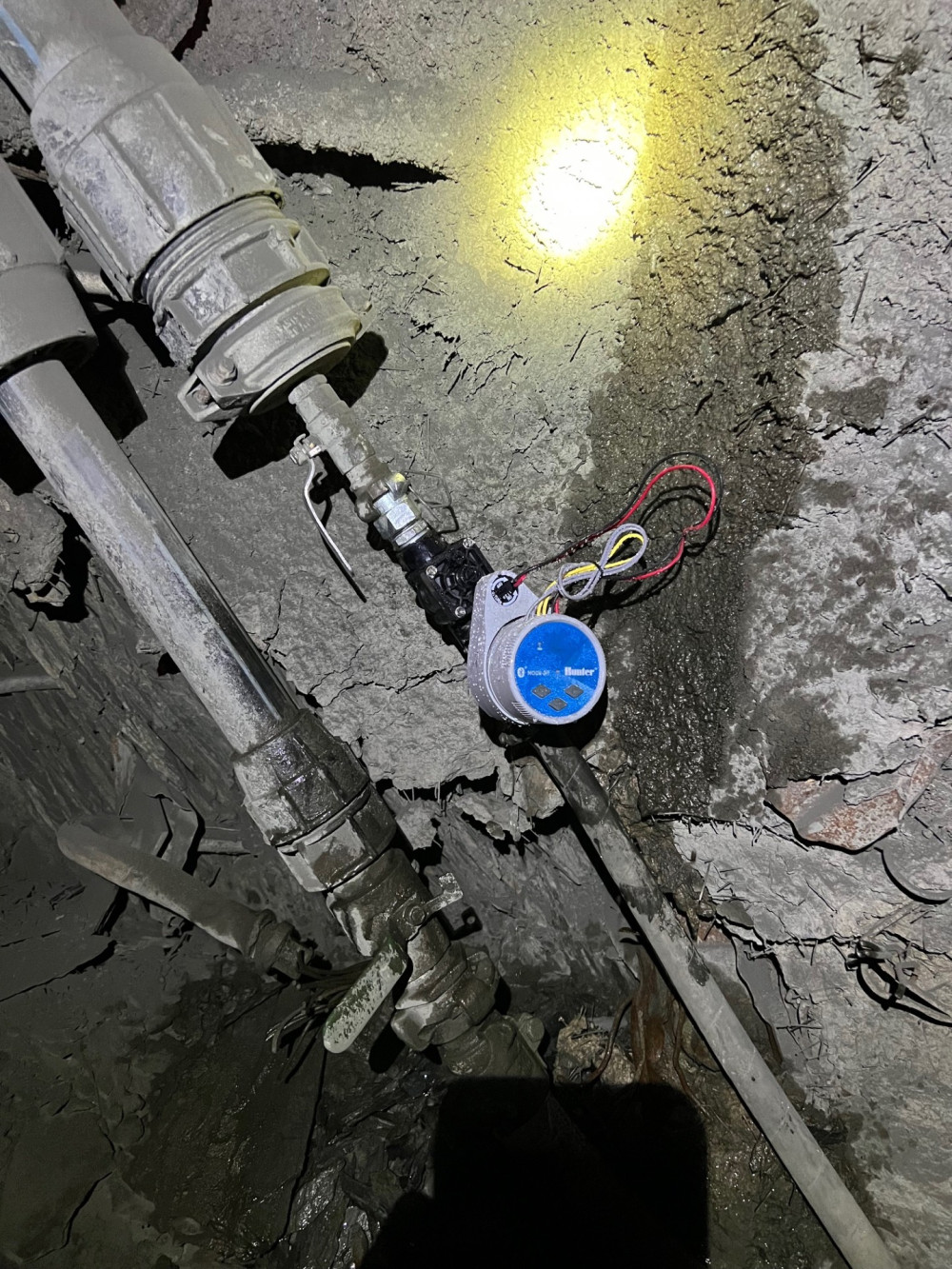
A simple garden solenoid was successfully integrated into the mine water dropper system to enable automated control of the sprinkler unit.
Where to Next?
Plans are already underway for Stope Soaker 3.0, featuring industrial-grade sprinkler heads like those used on golf courses and adaptations for blind uphole applications. The goal is to maintain the core principles—affordability, simplicity, and adaptability—while increasing durability and reach.
“The aim of this paper and talk was to get people thinking,” David told the audience. “We’ve accepted dusty stopes for too long. This isn’t the perfect solution, but it proves what we can do if we stop waiting for vendors to solve our problems and start solving them ourselves.”
An Industry-Wide Challenge
As Tina Hall, session chair, noted, “It’s always great to see a simple solution that delivers incremental improvements.” David’s presentation stood out not just for its humour and humility, but for its call to action.
“I challenge you all to have a go,” he said. “You might come up with the next best thing.”
